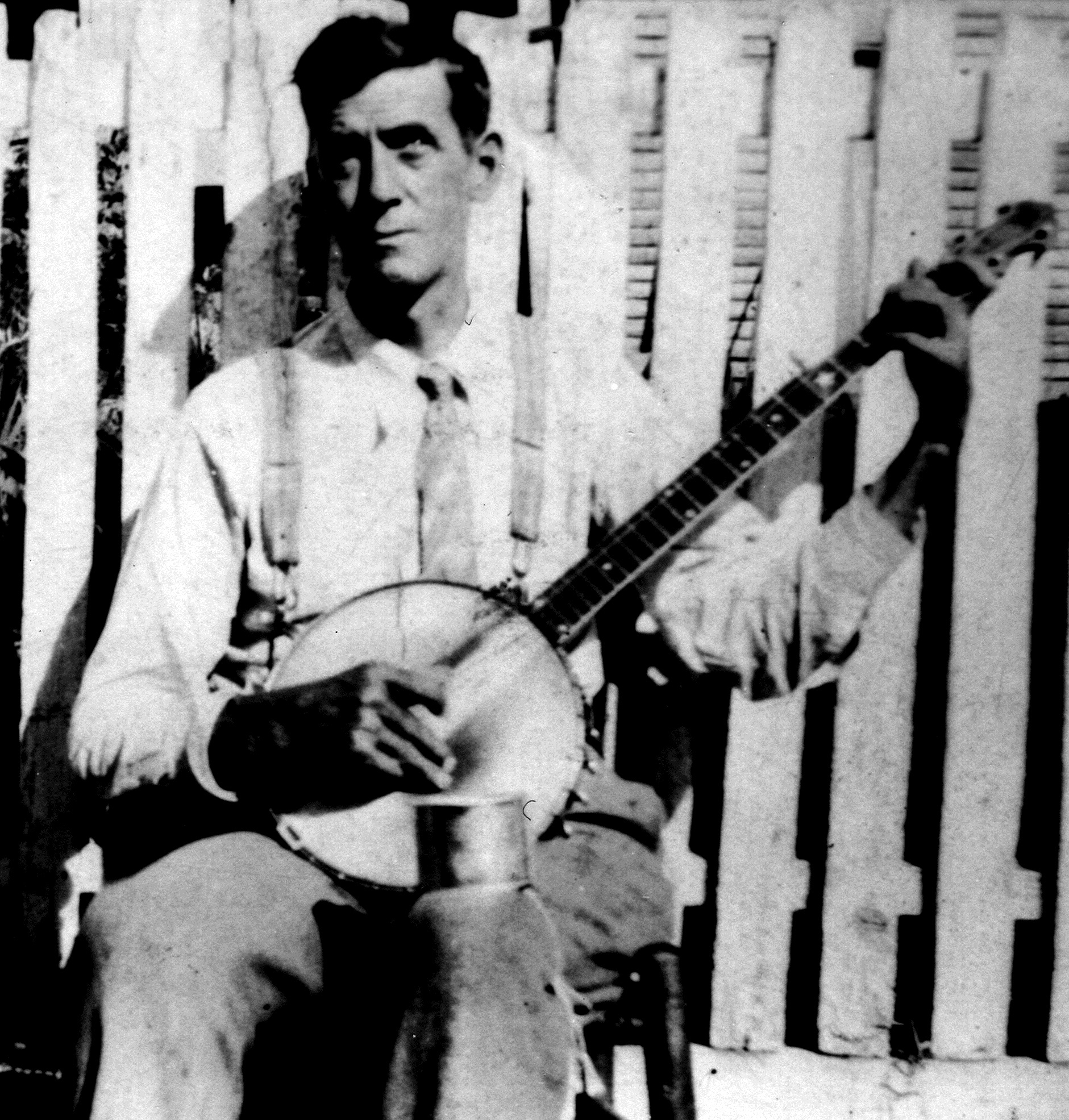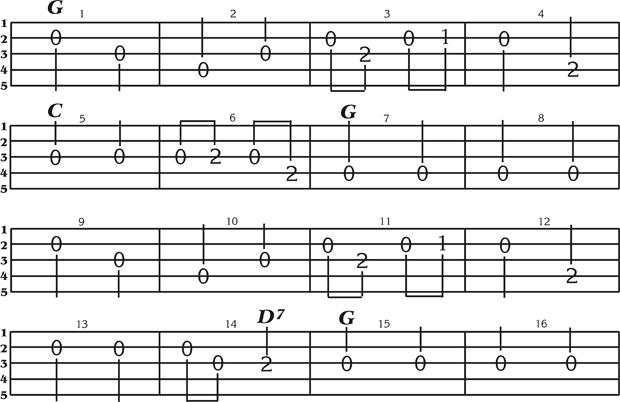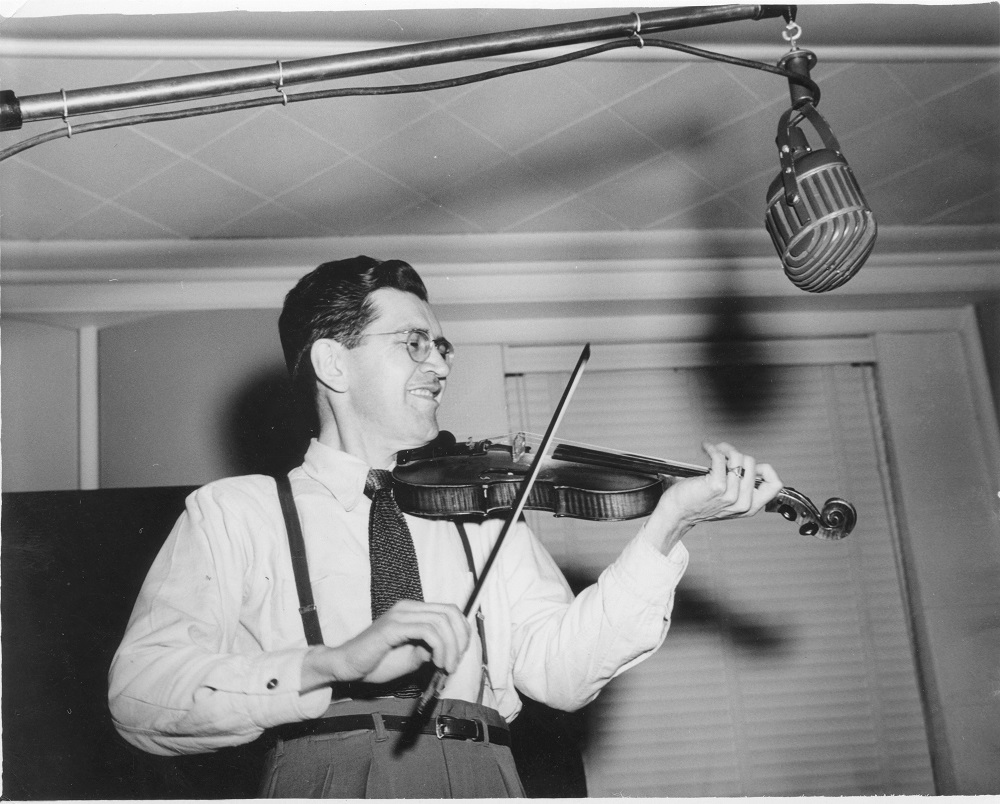By Wayne Erbsen
Following is an excerpt from the book Easy Two-Chord Songs for Guitar.
The thumb is truly the king or queen of all the fingers and deserves our utmost respect. Let’s give the royal thumb the important job of strumming down on the strings. “Down” means toward the floor. While holding down the Small C Chord, strum down with your thumb on the 1st, 2nd, and 3rd strings. For G7, strum down on the 1st, 2nd, 3rd, and 4th strings. (See chord diagrams at the end of this post.)
Here are some simple songs to practice your


 Kentucky-born, blind street singer Dick Burnett had every reason to compose I Am a Man of Constant Sorrow. An orphan by the time he was 12, Burnett was almost murdered in 1907 when he was robbed and shot in the face with a shotgun. Though he survived, Burnett was now a blind man. To earn a livelihood for his wife and child, he took to the streets with a banjo, a fiddle, and a tin cup tied to his leg. To add to his income, he produced little song books, which he later called “song ballets.”
Kentucky-born, blind street singer Dick Burnett had every reason to compose I Am a Man of Constant Sorrow. An orphan by the time he was 12, Burnett was almost murdered in 1907 when he was robbed and shot in the face with a shotgun. Though he survived, Burnett was now a blind man. To earn a livelihood for his wife and child, he took to the streets with a banjo, a fiddle, and a tin cup tied to his leg. To add to his income, he produced little song books, which he later called “song ballets.” 
 I recently published my newest clawhammer banjo book-
I recently published my newest clawhammer banjo book-
 I recently published my newest clawhammer banjo book-
I recently published my newest clawhammer banjo book-




